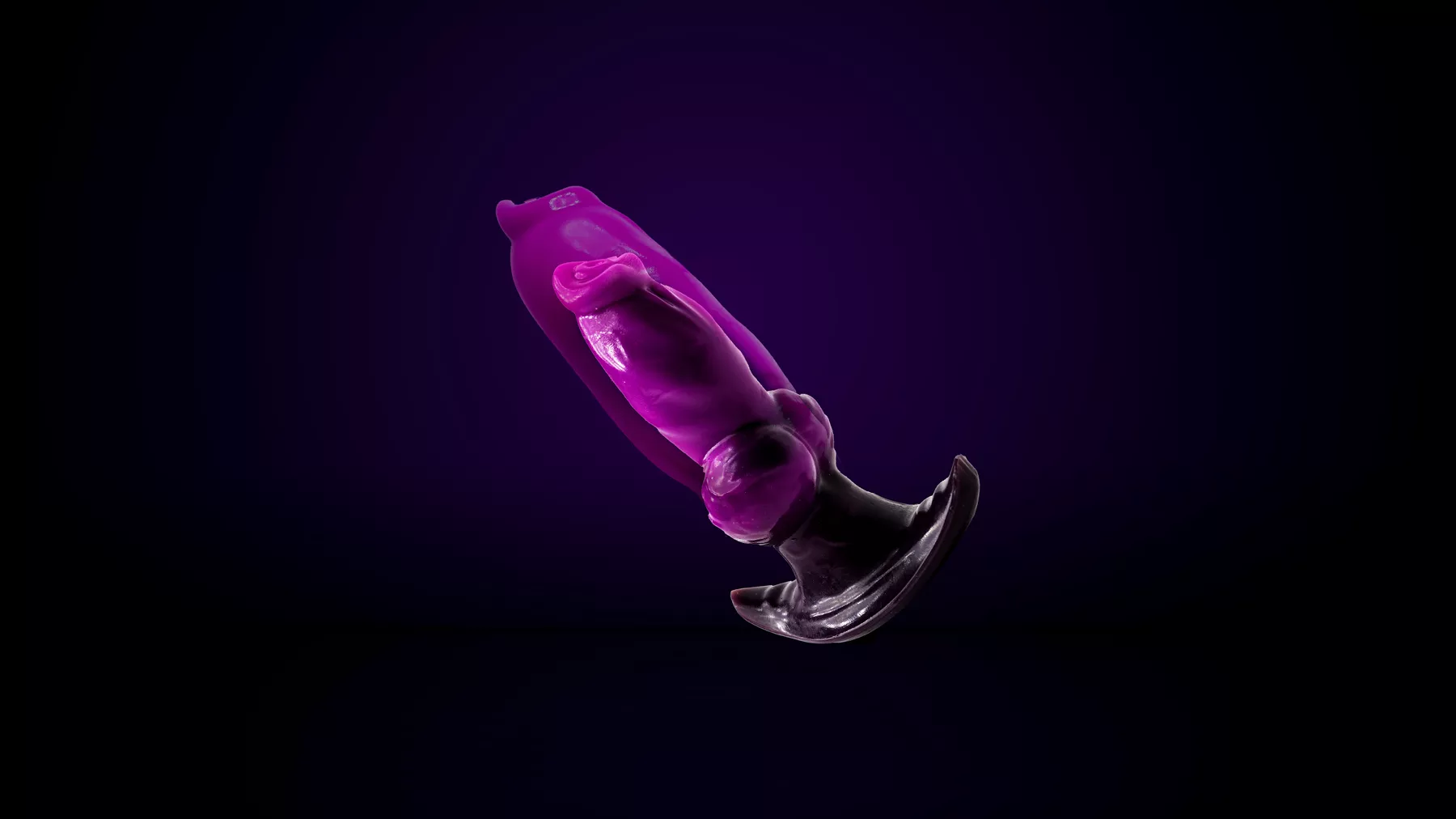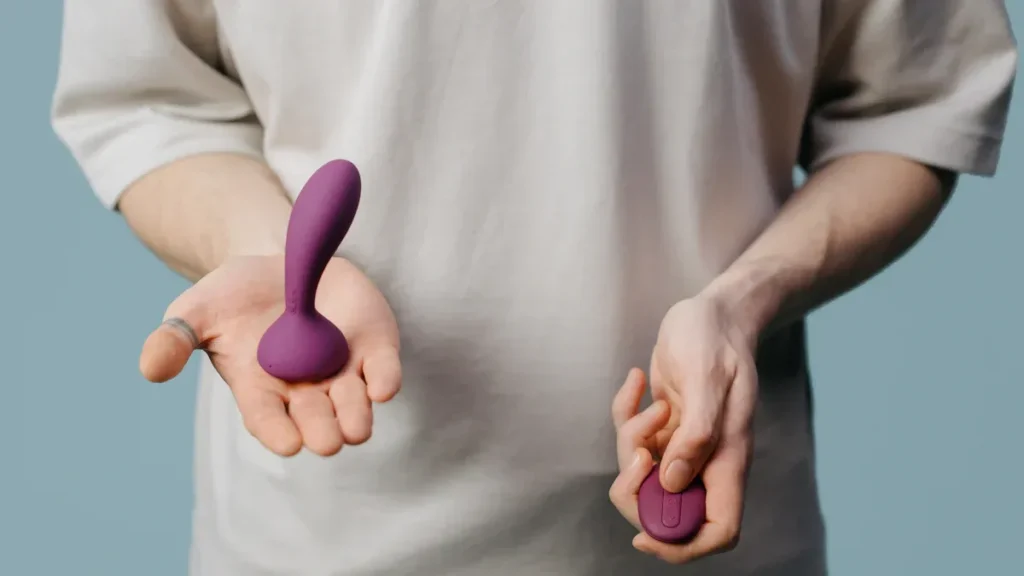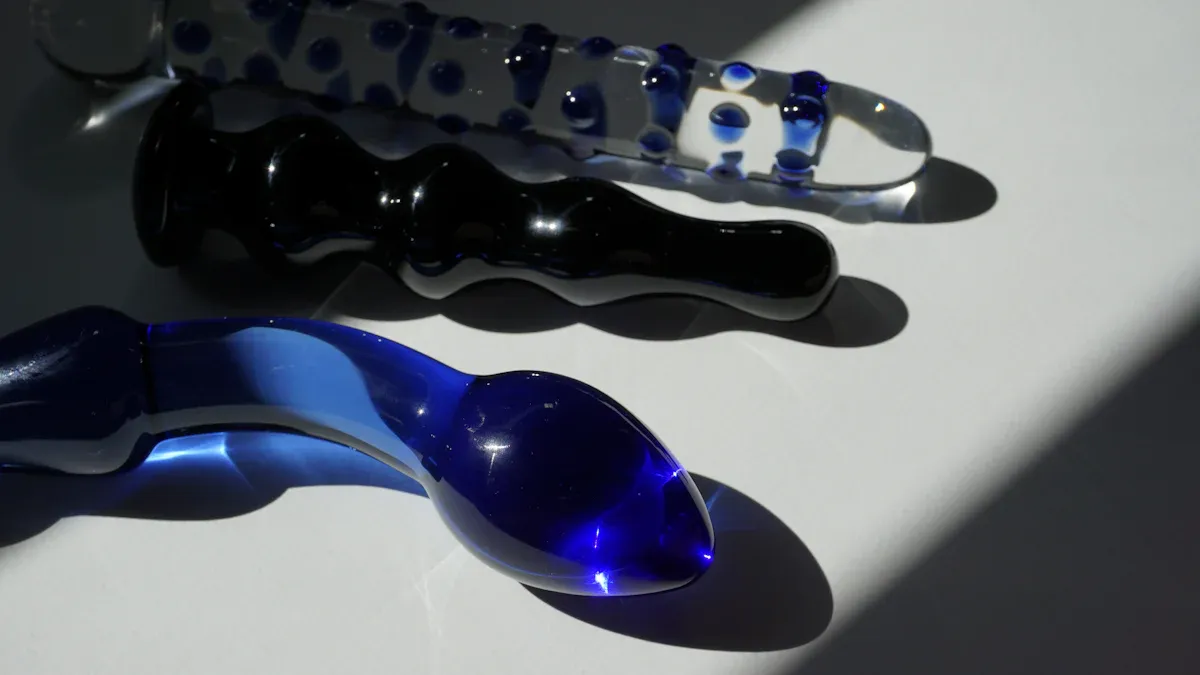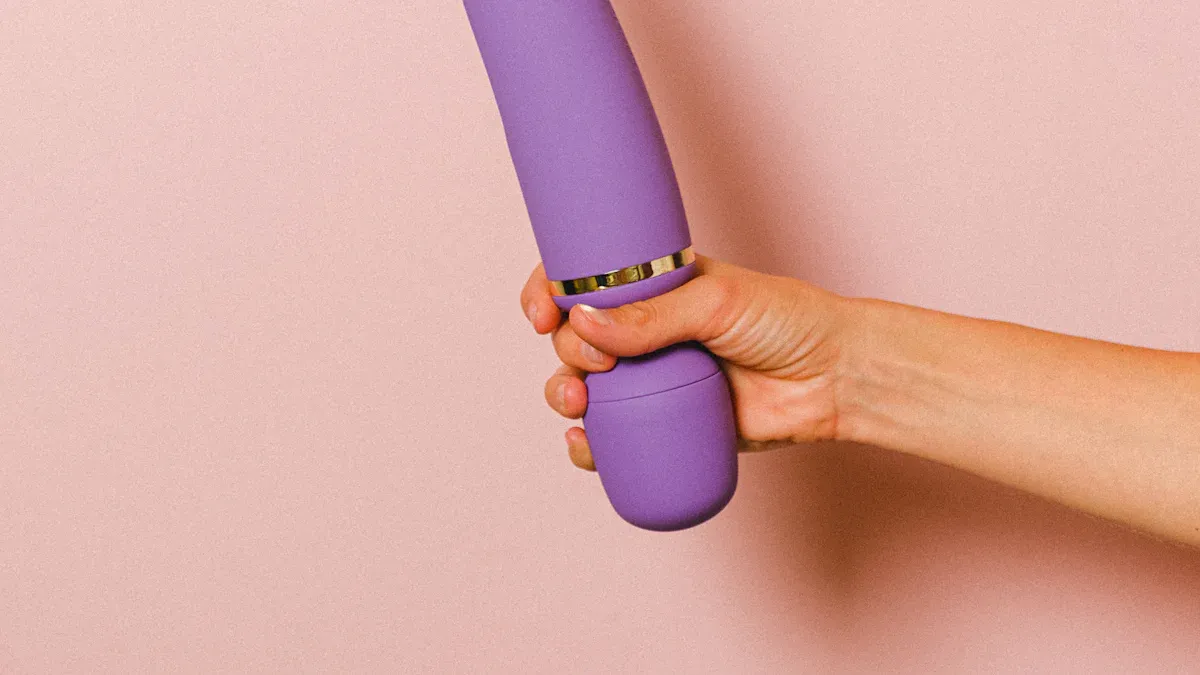How PVC Dildos Are Made and Why It Matters
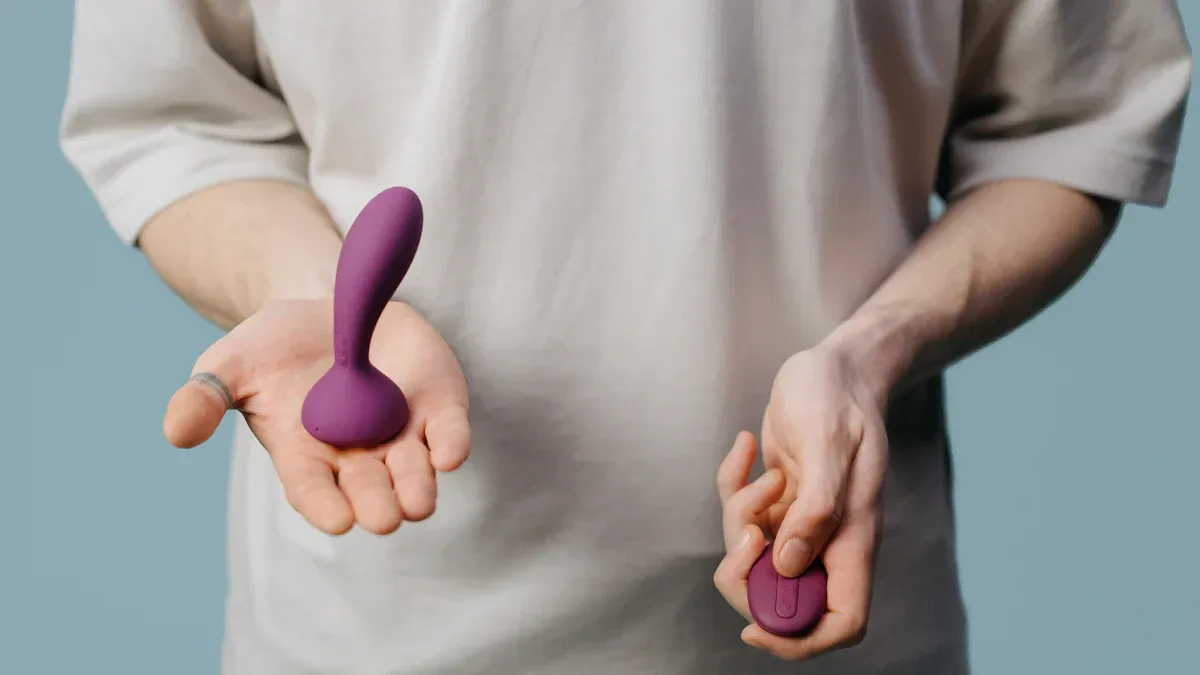
PVC dildos are a kind of sexual health product. They are made from polyvinyl chloride, which is a type of plastic. Makers often use this plastic for pvc sex toys. You can find them in many shapes, like Luminous Dildos, tenticle dildo, and Horse Dildos. Makers mix pvc with plasticizers and other chemicals. This helps create different textures. Many people worry about bad substances in pvc sex toys. These include phthalates or BPA, which can be risky for your health. You should know that pvc is porous. This means bacteria can hide inside, so cleaning is hard. Today, people want safer sexual health products. They look for non-porous options instead of regular pvc sex toys.
Common worries about pvc dildos are:
Bad chemicals like phthalates and BPA
Porous material that holds bacteria
Skin problems from old pvc
People want safer sexual health products
What Are PVC Dildos?
Material Basics
PVC dildos are made from a plastic called pvc. This stands for polyvinyl chloride. Makers use pvc because it is easy to shape. It can feel soft or firm. To make pvc dildos, factories mix pvc with other chemicals. These chemicals are called plasticizers. Most of the time, these plasticizers are phthalates. Phthalates make pvc softer and more bendy. Over 90% of phthalates are used to soften pvc. Even if a product says “phthalate-free,” pvc still has chlorine-based chemicals. These chemicals are part of pvc’s structure. The chlorine in pvc can make toxic byproducts. This can happen when making or throwing away pvc. So, pvc dildos have pvc polymer, plasticizers like phthalates, and chlorine-based chemicals.
Tip: Always read the label to learn about plasticizers and chemicals in your sex toys.
Texture and Firmness
PVC dildos come in many textures and firmness levels. Makers change how pvc feels by adding more or less plasticizer. If they add a lot, pvc feels soft and bendy. If they use less, pvc feels hard and stiff. Some pvc dildos are smooth. Others have bumps or ridges for more feeling. PVC is flexible, so makers can make many shapes and sizes. You can find realistic or fantasy designs.
Here is a quick look at how texture and firmness can change:
Texture Type | Firmness Level | Common Use |
|---|---|---|
Smooth | Soft/Medium | Everyday play |
Ribbed | Medium | Extra stimulation |
Firm | Hard | Precise pressure |
When you pick a pvc dildo, think about what texture and firmness you like. How pvc is made changes how it feels and how safe it is for your body.
Manufacturing Process

Mixing PVC and Plasticizers
You begin with pvc in its basic form. This plastic is stiff and does not bend. To make it soft for sex toys, plasticizers are added. The most used plasticizers in pvc dildos are phthalates. Di (2-ethylhexyl) phthalate, called DEHP, is the main one. You may also see diethyl phthalate (DEP) and di-p-butyl phthalate (DBP). These chemicals make pvc bendy, clear, and strong. When you mix pvc with these plasticizers, it feels soft and nice to touch. Some companies now use plasticizers without phthalates because of health worries. Still, most old-style pvc dildos use phthalates to get the right feel.
Note: Phthalates make pvc dildos softer, but people worry about health. Many brands now have phthalate-free choices.
Molding and Shaping
After mixing pvc and plasticizers, you need to shape the dildo. Factories use machines to heat and melt the pvc mix. The most common machine is a single-screw extruder. You put the pvc mix into a hopper. The screw inside melts and stirs the material. Then, the machine pushes the melted pvc into a mold. This mold gives the dildo its shape, like smooth or ribbed.
The mold decides the shape of the dildo.
You can change the screw speed and heat to change the texture.
After molding, the dildo cools and gets hard.
Workers trim the edges to finish the product.
This way, you can make many shapes and sizes. Dildos can be soft, firm, or have special textures. By changing the amount of plasticizer, you control how bendy or stiff the pvc is.
Step | What Happens |
|---|---|
Mixing | Mix pvc with plasticizers |
Heating | Melt the mix in the extruder |
Molding | Shape the dildo in a mold |
Cooling & Cutting | Cool and trim the finished dildo |
Additives and Chemicals
You do not just use pvc and plasticizers. Other chemicals help make the dildo. Some chemicals act as solvents or help mix the pvc better. Common additives are 1-Methyl-2 Pyrrolidinone, Dimethylphosphite, Phenol, Toluene, Tetrahydrofuran, Dimethylformamide, and Cyclohexanone. Each chemical has a job, like making pvc softer or helping it fill the mold.
Plasticizers, like phthalates, make pvc bendy.
Solvents help mix everything well.
Some chemicals help pvc set faster or last longer.
Some of these chemicals can be bad for you. Phthalates, for example, are linked to hormone problems and cancer in animals. Because of these risks, some companies use pvc without phthalates. Even with these changes, pvc dildos still have tiny holes, which makes them harder to clean and less safe for your body.
⚠️ Always check if your pvc sex toy says phthalate-free or non-toxic. This helps you make safer choices.
Safety & Body-Safe Concerns
Porosity and Hygiene
When you choose sexual health products, you need to think about porosity. PVC dildos are porous. This means they have tiny holes you cannot see. These holes trap bacteria and fungi. Even if you wash your toy, bacteria can stay inside. Over time, this can lead to infections or bad smells. Non-porous toys, like those made from silicone, glass, or metal, do not have these holes. You can clean non-porous toys much more easily. You can even boil them or put them in the dishwasher to kill germs.
Porous toys like PVC dildos are harder to keep clean. If you use them often, bacteria can build up. This makes them less body-safe than non-porous options. Many experts suggest using a condom over a PVC dildo, especially if you share it with someone else. This helps lower the risk of infection.
If you want the safest experience, pick body-safe materials that are non-porous. These materials do not trap bacteria and are easier to sterilize.
A study called “Bringing sex toys out of the dark: exploring unmitigated risks” found that PVC toys can break down into microplastics and nanoplastics. These toys also release chemicals like phthalates. The study showed that these chemicals can reach levels higher than what is allowed in children’s toys. This means you face extra risks when you use porous PVC dildos.
Phthalates and Chemical Risks
You may see the term phthalate-free on some sexual health products. Phthalates are chemicals used to make PVC soft and flexible. Many people worry about the health risks of phthalates. Studies show that phthalates can act as endocrine disruptors. This means they can mess with your hormones. Some research links phthalates to cancer and other health problems.
PVC dildos often contain phthalates unless the label says phthalate-free. Even then, you cannot always trust the label. The sex toy industry does not have strict rules. Some companies use the term phthalate-free, but the product may still have other risky chemicals. You should know that body-safe means more than just phthalate-free. It means the toy uses non-porous, body-safe materials and does not release harmful chemicals.
Many PVC dildos contain phthalates at levels above what is allowed in children’s toys. The FDA does not regulate most sex toys, so you must be careful when choosing products.
If you want to avoid the health risks of phthalates, look for sexual health products made from non-porous, body-safe materials like medical-grade silicone, glass, or stainless steel. These materials do not need plasticizers and are much safer for your body.
Cleaning and Safe Use
Cleaning PVC dildos takes more work than cleaning non-porous toys. You cannot boil PVC or put it in the dishwasher. The best way to clean a PVC dildo is to use warm water and a gentle liquid soap or a special toy cleaner. Scrub the surface well and rinse it off. Let it air dry before you store it. Always store your toy in a lint-free fabric bag to keep it clean.
Material | Porosity | Recommended Cleaning Method | Recommended Storage |
|---|---|---|---|
PVC & vinyl | Porous | Clean with warm water and a soapy washcloth; use gentle liquid soap or toy cleaner | Store in a lint-free fabric bag after air drying |
You should clean your toy before and after every use. This helps prevent infections. Because PVC is porous, bacteria can still hide inside even after cleaning. For extra safety, use a condom over your PVC dildo, especially if you share it. This lowers the risk of spreading germs.
Some cleaning agents, like bleach or vinegar, can remove bacteria from PVC if you soak and scrub the toy for at least five minutes. Boiled water also works if you soak the toy. Soapy water helps, but it does not remove all bacteria unless you scrub and soak. Still, you cannot make a PVC dildo fully body-safe by cleaning alone. The best way to stay safe is to choose non-porous, body-safe materials for your sexual health products.
Tip: Always check if your toy is labeled phthalate-free and made from non-porous, body-safe materials. This gives you the best protection for your health.
You should also know about regulations. In the US and EU, some rules limit harmful chemicals in sexual health products. These rules help keep you safe, but not all toys follow them. Look for products that meet safety standards and use body-safe materials. This helps you avoid hidden risks.
PVC Sex Toys vs. Other Materials
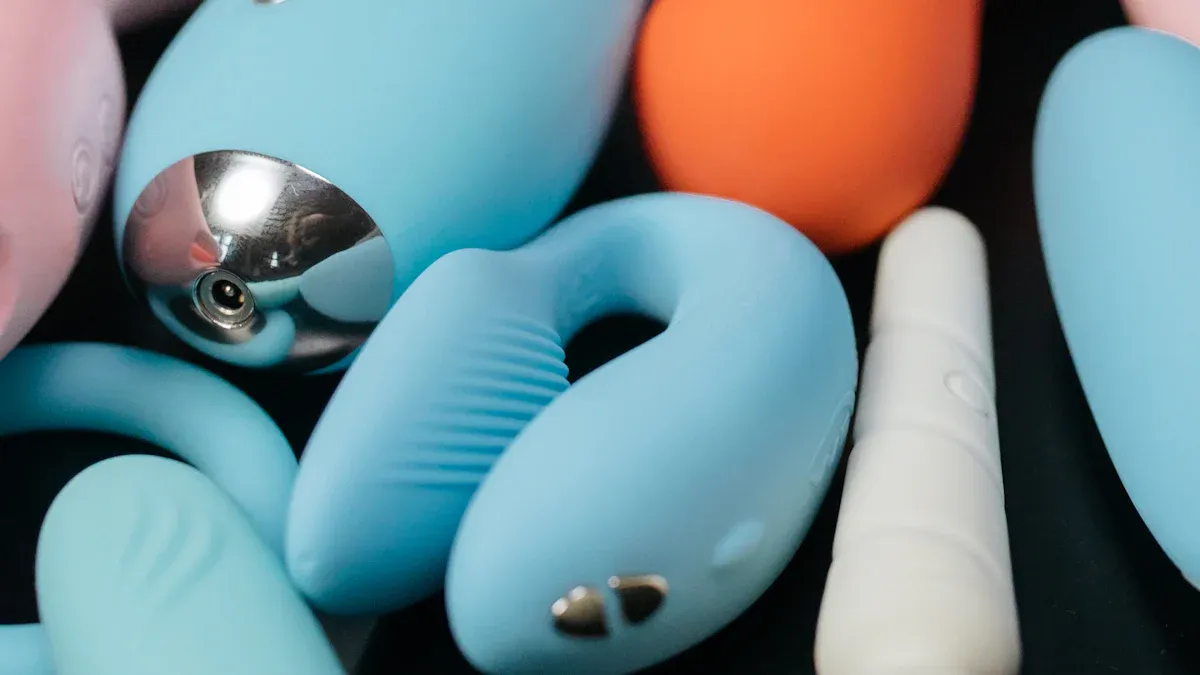
When you look for sex toys, you will see many choices. You may wonder how pvc sex toys compare to others. The material you pick can change your experience and safety. Let’s look at how pvc, silicone, glass, and metal sex toys stack up.
Silicone
Silicone sex toys are very popular. You will find that silicone is non-porous, so it does not trap bacteria. This makes cleaning easy. You can boil silicone toys or put them in the dishwasher. Most people do not have allergies to silicone. You will notice that silicone sex toys come in many shapes and textures. They last a long time and do not break down like pvc sex toys. Many users say silicone feels soft and smooth. You get more comfort and safety with silicone than with pvc. Most experts call silicone the gold standard for sex toys.
Glass and Metal
Glass and metal sex toys give you another safe choice. These toys are non-porous, so they do not hold germs. You can clean them with soap and water or even boil them. Glass sex toys use borosilicate glass, which is strong and safe. Metal sex toys use stainless steel, which is also safe for your body. Both glass and metal sex toys last a long time. You should check glass toys for cracks before use. Metal toys can feel cold at first, but they warm up fast. These materials do not have the chemical risks of pvc sex toys.
Pros and Cons
Here is a quick table to help you compare:
Material | Porosity | Cleaning | Chemical Risks | Durability | Price |
|---|---|---|---|---|---|
PVC Sex Toys | Porous | Hard to clean | High (phthalates) | Low | Low |
Silicone | Non-porous | Easy, boilable | Very low | High | Higher |
Glass | Non-porous | Easy, boilable | None | High | Mid-High |
Metal | Non-porous | Easy, boilable | None (if pure) | Very High | Mid-High |
PVC sex toys cost less, but they can cause skin problems, infections, and even hormone issues.
Silicone, glass, and metal sex toys are safer, easier to clean, and last longer.
You should avoid pvc sex toys if you want the best for your health.
Tip: Always choose non-porous sex toys for safety and easy cleaning.
Now you know pvc dildos are made with pvc and chemicals. These chemicals can make them unsafe if you use them a lot. Many studies say these toys have phthalates and other harmful stuff. These things can hurt your health. PVC is porous, so tiny holes let bacteria and mold hide inside. This makes it easier to get infections. It is better to pick toys made from non-porous materials. Silicone, glass, and metal are safer choices. Always check for safety labels and buy from brands you trust. Groups like ASTM and government rules help you find safe sex products.


